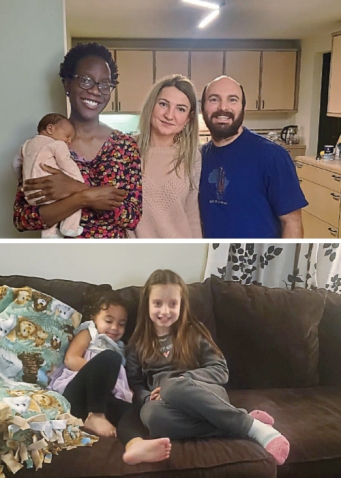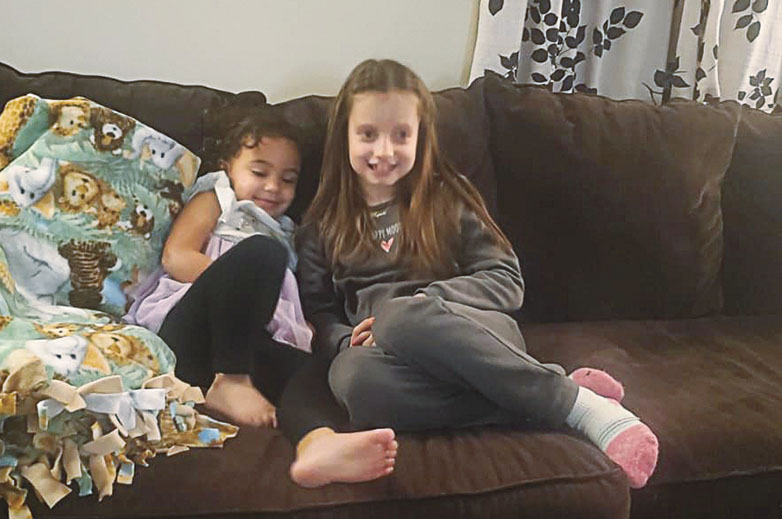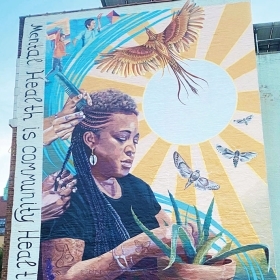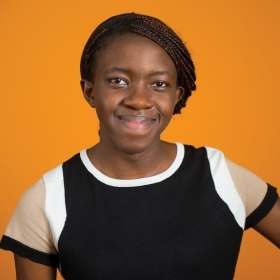In April 2022, the U.S. Department of Homeland Security launched a humanitarian program, Uniting for Ukraine, to streamline entry into the United States. Ukrainians participating in the program connect with Americans who must pass security and background vetting and demonstrate sufficient financial resources to “receive, maintain, and support” the Ukrainians they commit to welcoming. More than 125,000 Ukrainian nationals and their immediate family members have already been sponsored by U.S. residents.
Three of them came to State College, Pa., to the home of Karen “Kemi” Kemirembe ’12. Kemi, her husband, Troy Carl, and their toddler daughter welcomed a Ukrainian family—father, mother, and 8-year-old-daughter—into their home in September 2022.
“I was an international student, though I’m now American, and throughout my life, people always helped me,” Kemi says. “When I was in Uganda, where I’m from, my parents didn’t have money to send me to school, so other people would pay for my fees. When I was an exchange student, people hosted me. They were getting nothing out of it. I am just trying to give back.”
Kemi works at Penn State in its foundation relations office. Troy, who has volunteered for nonprofits in Asia and Africa, is the Penn State outreach coordinator for the Hubert H. Humphrey Fellowship Program, through the U.S. State Department. “They bring in professionals from around the world to stay in the U.S. for a year,” Kemi says. “We both have a love of working with international people, whether students or refugees.”
As they watched the war in Ukraine unfold, Kemi says, “We got tired of everyone on Facebook, saying, ‘Oh, we’re praying for Ukraine, we’re fundraising for Ukraine.’ Yet we had no idea where the money was going.” When they heard about Uniting for Ukraine, they jumped at the opportunity. “We knew we had space for a family of three,” Kemi says, “so we just filled out a form saying we needed three people.”
Welcoming the Ukrainian family has taken a village. “We did all we could to locate resources,” says Kemi. “We went to the state benefits office. We reached out to our local United Way and other nonprofits. We went through the Ukrainian Society at Penn State, who had a faculty advisor who introduced us to other Ukrainians. There were churches willing to help. We accepted furniture and gift cards. We have a buy-nothing group on Facebook in the area, and we asked for winter coats, and dolls, and art supplies. My officemates all chipped in for groceries.”
Before long, the Ukrainian couple were settled in their own apartment and working—the father as a car mechanic and handyman, the mother cleaning houses. She had been a substitute teacher in Ukraine, but isn’t fluent enough in English to teach. “Between the two of them, they’ve been able to make rent every month,” Kemi says. Their little girl is thriving in public school. Kemi and her family, including a second daughter born this winter, see them regularly, getting together for meals and for the kids to play in the park.
“Growing up in Uganda, on the left of our house were Congolese refugees, and in front of our house were Sudanese refugees. I grew up around refugees. I thought everyone deserved a second chance,” says Kemi. “So we helped someone get out of Ukraine. And our daughter learned to share, because, at the time, she was our only child. But we didn’t really aim to get anything out of it. We just wanted to help.”









We ask that those who engage in Wellesley magazine's online community act with honesty, integrity, and respect. (Remember the honor code, alums?) We reserve the right to remove comments by impersonators or comments that are not civil and relevant to the subject at hand. By posting here, you are permitting Wellesley magazine to edit and republish your comment in all media. Please remember that all posts are public.